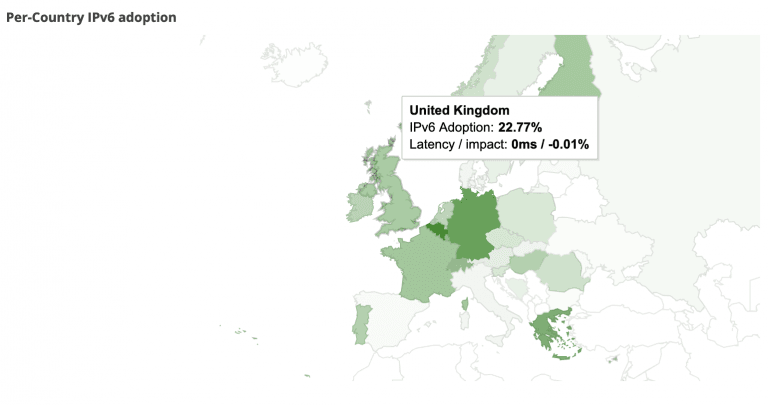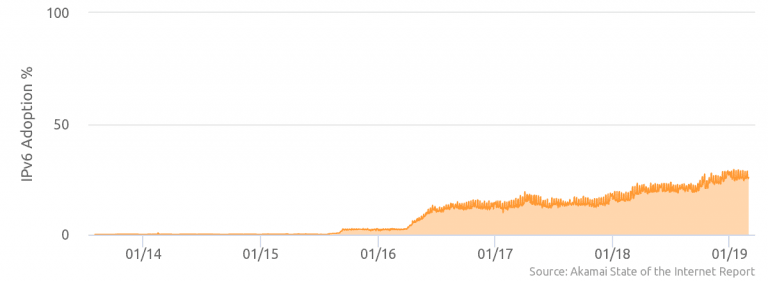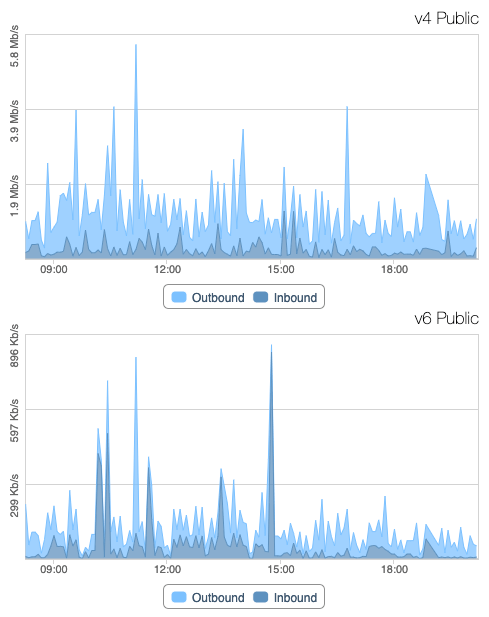IPv6 use in 2019
What is IPv6?
Historically the internet has used IPv4 to assign IP addresses to individual devices – however, these are quickly running out so IPv6 was introduced to solve the problem. There are a theoretical 3.4×1038 IPv6 addresses. The rollout of IPv6 has been very slow, it was released back in 1998 and still isn’t very widely used.
IPv6 at NetWeaver
Every website we host is accessible by both IP versions, as is the entirety of our infrastructure. This enables us to get a good view of how much it is used, especially amongst our main demographic of UK small business.
The two graphs below show typical traffic on a shared server:
On average, we’re seeing around 12% of our traffic arrive over IPv6 at present.
IPv6 at other providers
Some of the big internet companies provide public statistics for its adoption too. With Google currently showing 22.77%:

And Akamai at 25.8%:

Since our usage rate is quite a bit lower, you may be wondering why. We host and deliver a lot of email. Adoption amongst email providers has been much slower than web site providers – as such the huge majority of email is still delivered over the old IPv4. This article from SendGrid explains this is some details.
Adoption seems to have slowed in recent years, and there doesn’t seem to be an agreement on the reason. With technologies such as CGNAT becoming increasingly powerful, and often cheaper, and the fundamental fact that sticking with IPv4 isn’t actually causing many end users a real problem – the economic push isn’t entirely present. This article from The Register discusses this in detail.
The future
IPv6 is here to stay, as more and more users go online with an increasing number of devices, it’s use will continue to slowly increase. As the price of IPv4 addresses continues to increase – currently hovering over $20 per address – eventually the economic imperative will surely overcome the inertia?
Let us know your thoughts in the comments.
Recent Posts
Recent Comments
- anonymous1024 on Pi-hole vs AdGuard Home
- Konrad on Add https to Pi-hole with caddy
- jolu on Add LetsEncrypt SSL certificate to Pi-hole
- Mike on Add https to Pi-hole with caddy
- Kamyar on Pi-hole vs AdGuard Home

